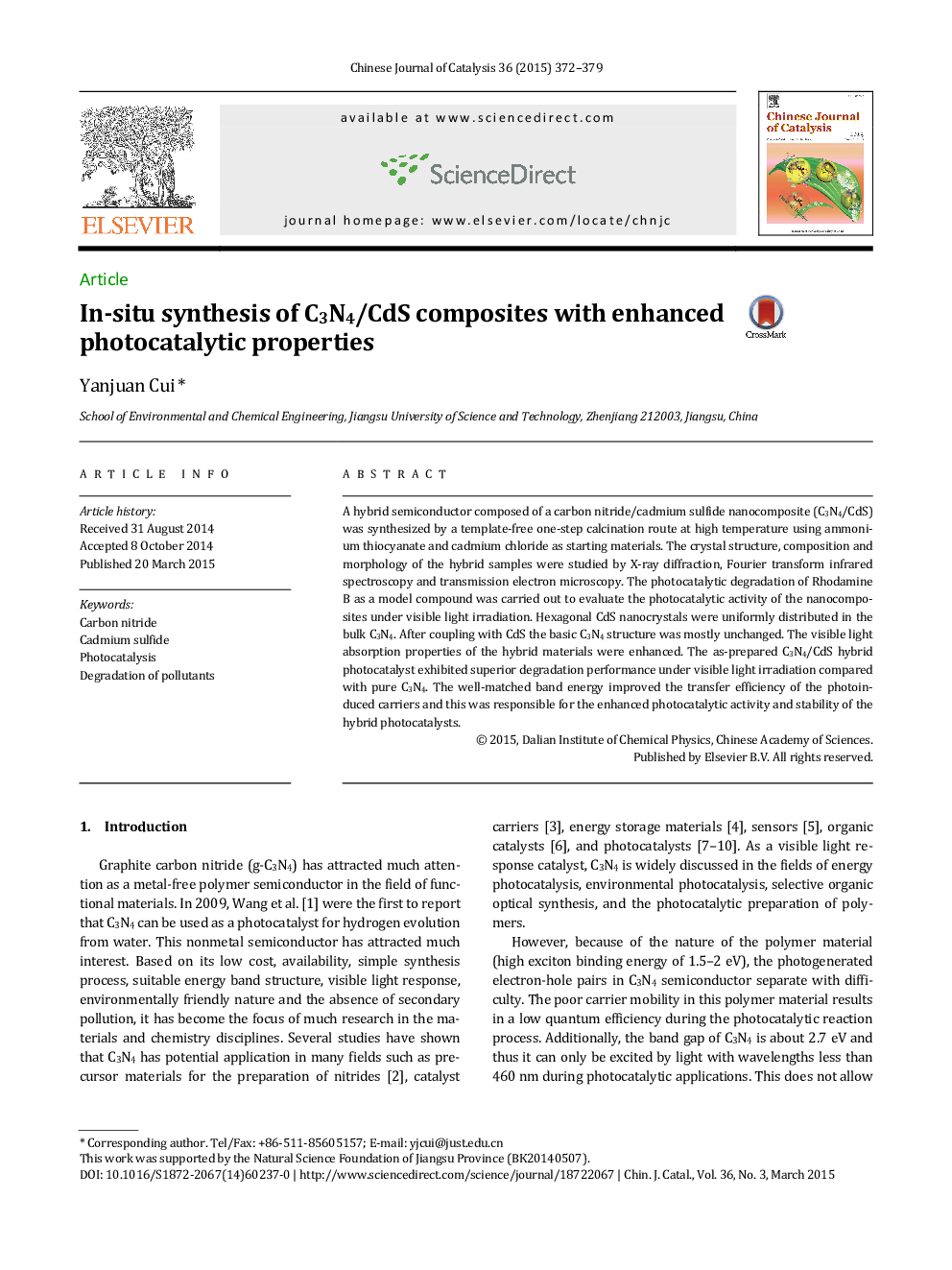| Article ID | Journal | Published Year | Pages | File Type |
|---|---|---|---|---|
| 59943 | Chinese Journal of Catalysis | 2015 | 8 Pages |
A hybrid semiconductor composed of a carbon nitride/cadmium sulfide nanocomposite (C3N4/CdS) was synthesized by a template-free one-step calcination route at high temperature using ammonium thiocyanate and cadmium chloride as starting materials. The crystal structure, composition and morphology of the hybrid samples were studied by X-ray diffraction, Fourier transform infrared spectroscopy and transmission electron microscopy. The photocatalytic degradation of Rhodamine B as a model compound was carried out to evaluate the photocatalytic activity of the nanocomposites under visible light irradiation. Hexagonal CdS nanocrystals were uniformly distributed in the bulk C3N4. After coupling with CdS the basic C3N4 structure was mostly unchanged. The visible light absorption properties of the hybrid materials were enhanced. The as-prepared C3N4/CdS hybrid photocatalyst exhibited superior degradation performance under visible light irradiation compared with pure C3N4. The well-matched band energy improved the transfer efficiency of the photoinduced carriers and this was responsible for the enhanced photocatalytic activity and stability of the hybrid photocatalysts.
Graphical AbstractC3N4/CdS nanocomposites with CdS nanocrystals uniformly dispersed in the bulk of C3N4 were synthesized using a one-step calcination method. They were shown to be stable hybrid photocatalysts for the degradation of organic pollutants under visible light irradiation.Figure optionsDownload full-size imageDownload as PowerPoint slide
